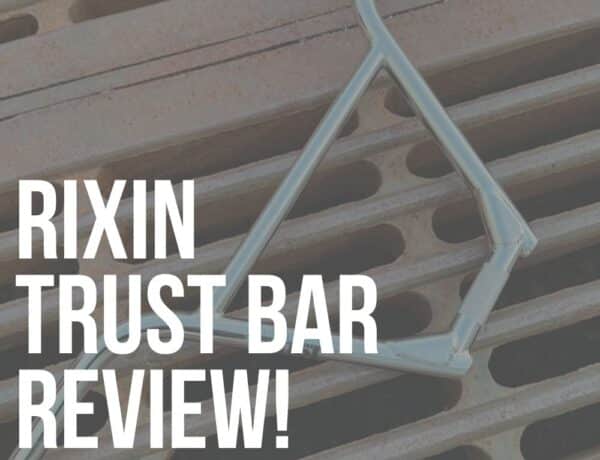Are you trying to figure out what BMX sprocket size is best for your riding style?
You came to the right place!
There are only really two ways of approaching the right sprocket size.
(Which makes picking the perfect gear ratio a lot easier.)
You want to ask yourself these simple questions:
- Do I want to go fast?
- Do I need more initial engagement (for technical tricks)?
This brings us to:
What Is The Best Gearing For BMX?
You would want to opt for a higher gear ratio when answering the first question.
This means increasing the teeth on the front BMX sprocket. The BMX standard rear hub tooth number is 9, so you cannot do anything about it.
But you can put a larger front sprocket to increase the gear ratio.
What sprocket is best for speed?
You’d at least want a 28T sprocket in the front.
However, I recommend jumping straight to 30T.
A 30/9 gear ratio is what Corey Walsh rides – and he goes EXTREMELY fast.
Anything higher than that may make the bike too hard to pedal. But there are dudes out there with 33/9 gear ratios (but I think it’s unnecessary).
What does a smaller BMX sprocket do?
A smaller front sprocket or a lower gear ratio makes pedaling a lot easier.
This is especially handy if you’re into technical street riding.
Still, you can go fast with a 25/9 ratio, but you will need to pedal more.
In short, if you don’t do too much high-speed stuff (and are into street stuff, especially technical jibbing), I recommend picking a smaller front sprocket to lower the gear ratio.
Conclusion: Which BMX Sprocket Size Is Better, Larger Or Smaller?
It depends on the riding style you’re into.
We’re getting back to the initial two questions you need to ask yourself, and here are the answers:
- If you want to go fast, opt for a 30/9 gear ratio.
- If you need more initial engagement and are into technical riding, then you’re safe with a 25/9 ratio.
Aaand that’s all the science behind choosing the right sprocket size to enjoy your sessions more.
FAQs About BMX Sprocket Size
What is the ideal BMX sprocket size for street riding?
A mid-sized sprocket, typically around 25-28 teeth, is often preferred for street riding. It balances speed and acceleration well, suitable for burly street and technical shredding.
How does sprocket size affect BMX performance in racing?
In racing, a larger sprocket (around 44-46 teeth) can provide better top speed, while a smaller one (around 36-39 teeth) enhances acceleration. The choice depends on the track layout and the rider’s racing style.
Can changing my BMX sprocket size improve my jumping and air tricks?
Not really; whether you opt for a smaller or larger sprocket, it won’t have too big of an impact on your jumping and flow tricks. Even the weight difference is so tiny you barely notice it.
What are the differences between small and large BMX sprockets?
Small sprockets (around 25 teeth) are more compact, offering better clearance and less risk of damage. Large sprockets (around 36+ teeth) provide more speed on long stretches but are more prone to impact damage.
How do I choose the right sprocket size for my BMX bike?
Consider your riding style: smaller sprockets (25-28 teeth) for street, park, and technical riding; medium sprockets (30-36 teeth) for trails and transitions and larger sprockets (36-46 teeth) for racing and high-speed tracks. Also, factor in your personal preference for acceleration versus top speed.
Does a smaller sprocket make it easier to do technical BMX tricks?
Yes, a smaller sprocket can help. It allows easy acceleration and provides better clearance, making it simpler to perform technical tricks without the sprocket getting in the way.
What sprocket size is recommended for beginners in BMX?
For beginners, a sprocket size of around 25-28 teeth is advisable. It offers a good balance for learning various aspects of BMX riding without being too challenging to manage.
::
Since we’re on the topic of sprockets, you may also be interested in my collections of the best BMX chains and the strongest half-link BMX chains.






